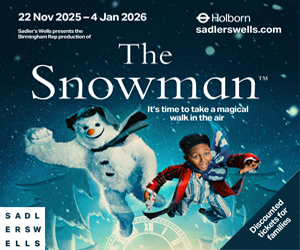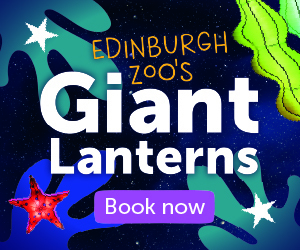Primary Times - the definitive what’s on and where to go family guide of activities and events for children of primary school age. Things to do with your kids during the school holidays including arts and craft activities, music and theatre for children, parties, competitions, days out, and family attractions along with term time drama schools, dance classes, after school clubs and sports activities. Things to do at a place near you!
Q&A with children's author Abi Elphinstone
 When she’s not writing about Moll and Gryff’s latest adventures, children’s book author Abi Elphinstone can probably be found travelling the world looking for her next story, working as a volunteer for a charity called Beanstalk or doing star jumps on the top of a mountain.
When she’s not writing about Moll and Gryff’s latest adventures, children’s book author Abi Elphinstone can probably be found travelling the world looking for her next story, working as a volunteer for a charity called Beanstalk or doing star jumps on the top of a mountain.
Abi answered some questions about what she was like when she was younger, how she became an author and where she gets the inspiration for her magical stories.
How did you become an author?
In 2006, I wrote my first children’s book. I submitted it to thirty literary agents and it was rejected by every single one. I taught English for four years and in the evenings and holidays, I wrote another book. I sent that to thirty literary agents – and it was rejected by them all. Again. A few agents said they saw ‘glimpses of brilliance’ and ‘raw talent’ in my work but that my plots were unoriginal and my writing style was amateur. I wrote a third book. You can guess where this is going: it was rejected by every agent I sent it to. By this point I had racked up ninety-six rejections from agents. But something inside me refused to give up. I kept every positive comment any of the agents gave in their rejection letters and took every bit of advice they offered: I went to literary festivals, I read more children’s books, I attended writing courses, I started blogging and I re-worked my writing until it was the very best it could be. Perhaps most importantly: I stopped putting my focus on getting a book deal and starting thinking about writing a story that really mattered to me. I sent off The Dreamsnatcher to one agent. She signed me and within two months I had a two-book deal with a major UK publishing house. I won’t ever forget the struggle of writing before being published – of the despair, loneliness, hurt and disappointment. But you’ve got to keep believing in your work and in yourself. Because so much of writing is about perseverance. And as my mum said to me every step of the way: ‘If you’re not failing, you’re just not trying hard enough.’
At what age did you know that this was what you wanted to do for the rest of your life?
When I was 6 years old, I wanted to become a unicorn. When I was seventeen years old I wanted to present Blue Peter. And when I was twenty-three years old I realised I wanted to be a children’s author.
Did you enjoy school?
I loved English lessons, sport (especially tennis and netball) and messing around with friends. I was less keen on Maths and Science though – a lot of that went right over my head.
Where did you go to school?
I went to Stracathro Primary School, just outside a little village called Edzell, in Angus, and then on to St Leonard’s Senior School, in St Andrews. Both Scottish schools were situated in stunningly wild locations – at the foothills of the glens and against a backdrop of crashing waves – and I often think back to those settings when writing books now.
Were you good at English?
It was my favourite subject – stories were something that fascinated me – so I tried hard and generally did well. I’m dyslexic though so I found it hard, and time consuming, getting my ideas straight on paper.

Did you read a lot?
I read most nights before bed but during the day (in the holidays, at least) I’d be outside exploring. Stories were whirling around my head while I climbed trees, made potions from flower petals and tore across the Scottish moors, but it wasn’t until I was much older that I wrote them down. I currently volunteer for a literacy charity called Beanstalk though – and the children I read with there devour books – often more than one a week!
What kind of books did you read?
I adored fairytales as a child, especially The Snow Queen. I found the language mesmerising and the villain chillingly awful. The first chapter books I remember loving were Jill Murphy’s The Worst Witch series and from there I moved on to Alan Garner, Sylvia Waugh, Anne Fine and C.S.Lewis’ Narnia books before discovering my favourite book of all: Philip Pullman’s Northern Lights.
How do you know what to write about?
When I sit down to write a book, the first thing I do is draw a map because it is only when my characters start moving from place to place that a plot unfolds. I usually have an idea of what kind of landscape I want to create – Arctic ice plains or English smuggling villages – then I build the story around the landscape. I love quest stories filled with clues, riddles and spells so I often base my plots around a clue. For example, in The Night Spinner, my characters are told: ‘steal the last note of the witches’ song, then take a feather from burning wings, and you’ll find what you need one hundred years deep.’
Where do the characters in your book come from and how do you know what to call them?
Sometimes I borrow aspects of existing personalities to create my characters. For example, there’s a lot of me in my heroine, Moll Pecksniff, and there is a great deal of my little sister in Scrap (a smuggler child Moll and her friends meet in The Shadow Keeper). But other times I invent wildly. I love reversing expectations so in the book I’ve just finished writing I have an enormous giant who is a total hypochondriac. I find character names in very strange places. I found the surname of the heroine of The Dreamsnatcher, Moll Pecksniff, from a shower gel in TK Maxx and I got the name for a chippy street urchin in The Shadow Keeper, Smog Sprockett, from a menu in a London restaurant!
What are you working on just now?
I have just finished writing my fourth book. Drawing on both my favourite fairytale, Hans Christian Andersen’s The Snow Queen, and my time living with the Kazakh Eagle Hunters in Mongolia, this book is about an eagle huntress, an inventor and an organ made of icicles. But it is also a story about belonging, even at the very edges of our world. It comes out in January 2018 and in the meantime I’m planning a brand new series. I think it will feature a phoenix.
When you visit schools to talk about your writing, what do the children mostly want to know about?
I talk a lot about the adventures I go on to inspire my books. Some are close to home, like spending time with one of the last ‘real’ Romani gypsies, Pete Ingram, in Hampshire while some are further afield, like dog-sledding across the Arctic and watching orcas dive for herring. And the most-asked question by children is: ‘Where in the world do you want to go next?’
Do you worry about the digital era inhibiting creative imagination?
I worry that we are forgetting to look up and out from our phones, laptops and iPads and if we are always looking down we will miss the incredible magic around us, especially the wonders of the natural world which so often spark ideas for stories. Writers are people who remember to look up and out to find their stories.
Do you prefer a printed book or are you happy reading a book on a digital device?
I’ve never owned a kindle – I find reading words on a screen tiring and sometimes confusing – and, as a result, I’ve only ever read from a printed book. I love the whispery sound pages make when turned and I like lining my bookshelves with stories I adored. And the children I read with, as a Beanstalk reading helper, seem to prefer printed books, too – perhaps stories feel more alive to a child when it’s up to them to turn the pages and move the plot forward.
If you were to offer a child who likes to write stories a piece of advice – what would it be?
Carry a notebook with you. Live a life filled with adventure. And never be afraid to fail.
Bio
Abi Elphinstone grew up in Scotland where she spent most of her childhood building dens, hiding in tree houses and running wild across highland glens. After being coaxed out of her tree house, she studied English at Bristol University and then worked as a teacher. She is the author of THE DREAMSNATCHER, THE SHADOW KEEPER and THE NIGHT SPINNER. When she's not writing, Abi volunteers for children’s literacy charity Beanstalk, speaks in schools and travels the world looking for her next story.
About Beanstalk
Beanstalk is a national charity that provides one-to-one literacy support to children who struggle with their reading. The charity recruits, trains and supports volunteers to provide one-to-one literacy support in primary schools. Beanstalk’s trained reading helpers transform the lives of the children they support, turning them into confident, passionate and able readers.
In the last school year the charity helped over 11,000 children across England, in over 1,400 schools, with the help of over 3,000 reading helpers, ensuring children have the skills and confidence to reach their true potential. By 2020-21 Beanstalk aims to help 30,000 children every year, with 8,000 volunteers.




